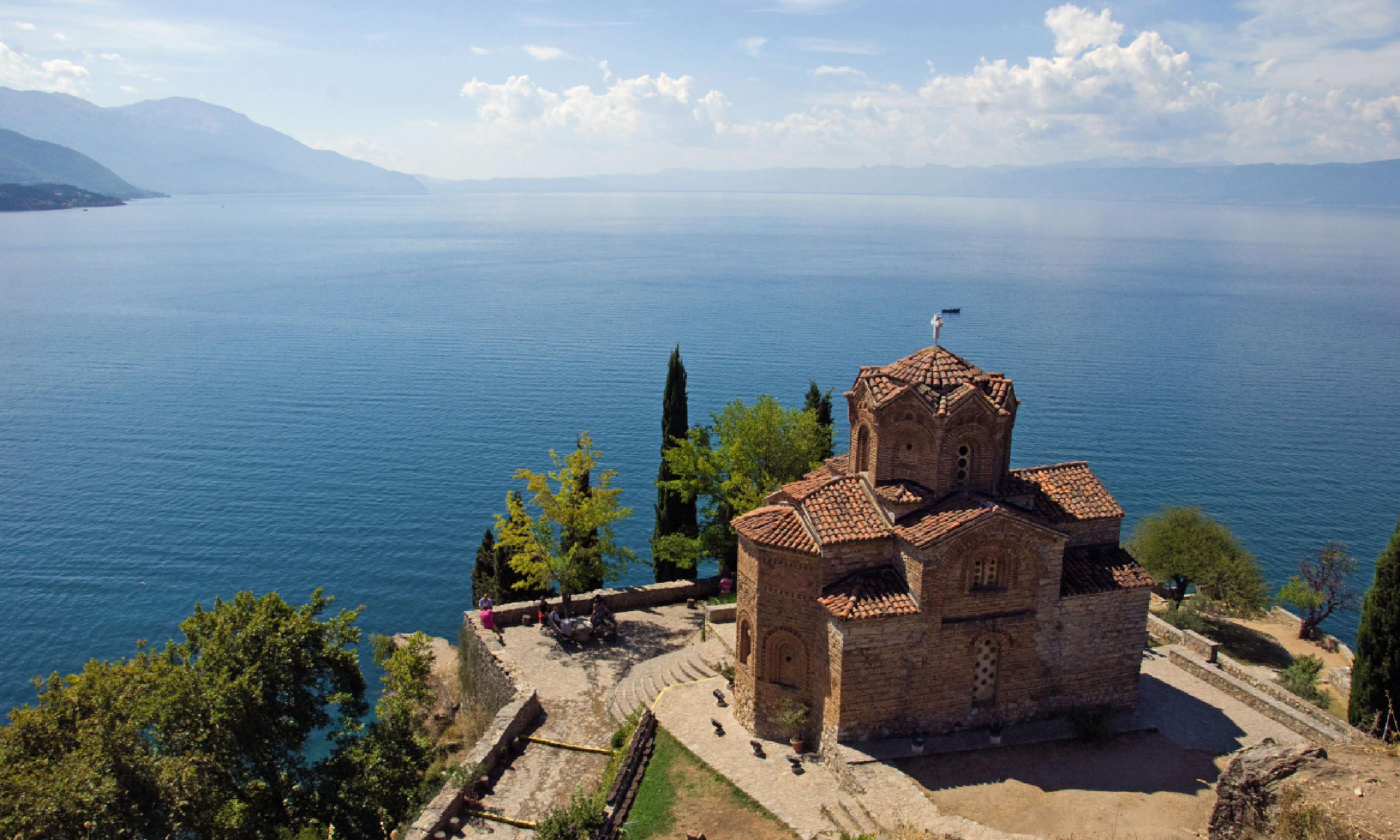
Rediscovering Kosovo, Albania and Macedonia
Wanderlust kickstarted one wave of tourism to the underrated Balkans – and Macedonia won Best Emerging Destination in the 2016 Wanderlust Travel Awards. Now it’s time more of you headed for Kosovo, Albania and Macedonia...
“Back in 2005
Wanderlust was here. They were the first! People started to come then.” I broke, startled, out of my reverie as I overheard Brother Kalist reminiscing. “I can still remember the reporter – it was like it was yesterday!”
I moved away from the fresco I had been studying and introduced myself to the charismatic bearded monk who lives alone in the monastery of Sveta Bogorodica at Treskavec, set high on a windswept hill beneath Macedonia’s Mount Zlato. “I had a copy of the magazine,” he said, “but I lost it to the fire.”
Back in 2005, when a
Wanderlust writer did indeed visit Treskavec, there was only a rough track up to the monastery. However, in 2013 there was a devastating fire, and a road was built to help facilitate the reconstruction.
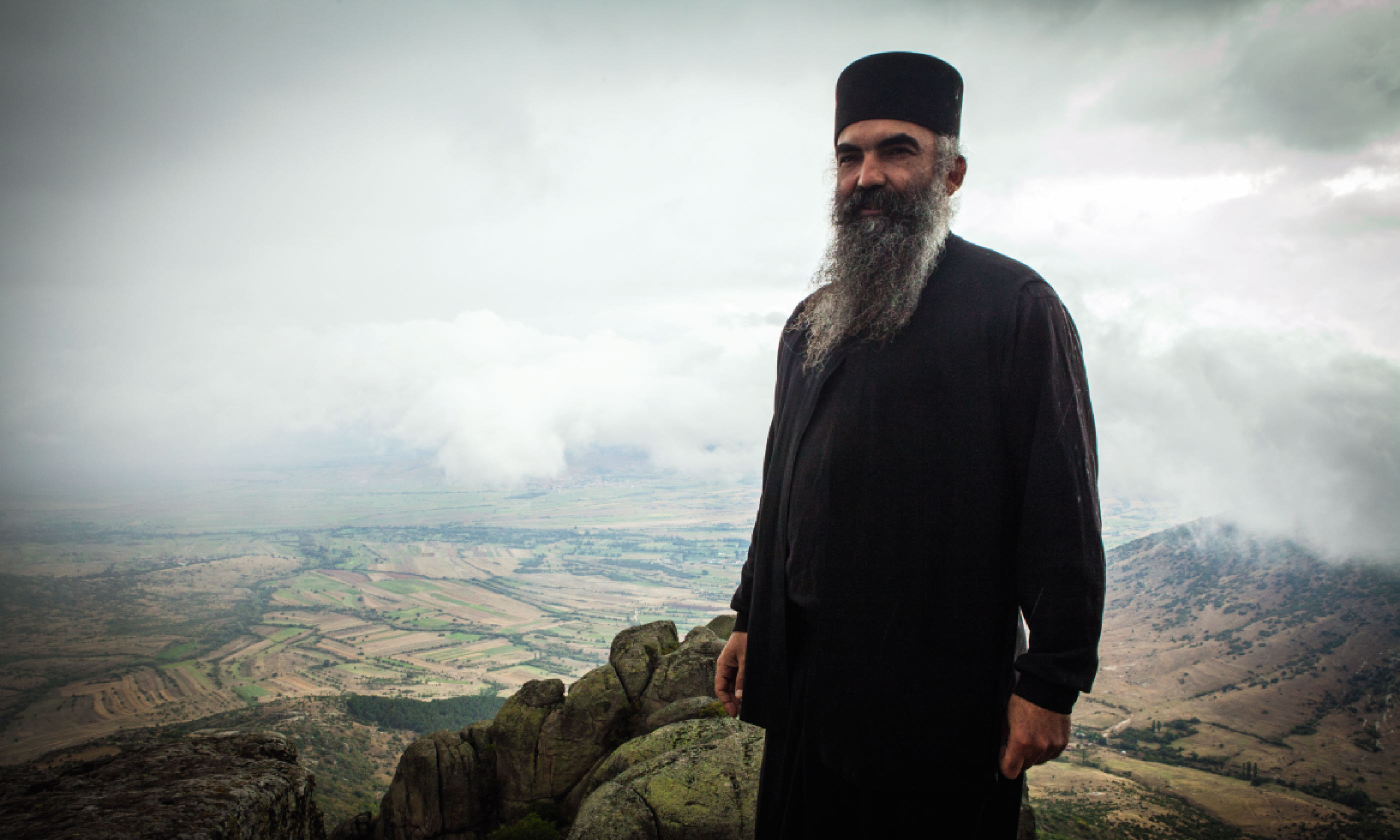 Brother Kalist (Lyn Hughes)
Brother Kalist (Lyn Hughes)
Brother Kalist seemed remarkably sanguine about the disaster, explaining that the monastery, which dates back to the sixth century, had been destroyed by fire many times over the years: “We joke that the same four places always survive: the kitchen, refectory, bell tower and the church.” But he regretted the loss of his copy of
Wanderlust.
Having explained that he hardly ever had visitors before the article, and then a guidebook wrote about the place, he now receives around 100 people a week in summer. “They ask me how it is to live alone on a mountain, surrounded by wolves and bears,” he smiled.
Would more people come now, with the new road? “It will bring a different type of visitor here,” he surmised as we walked outside the atmospheric church to see skeins of mist swirling around the granite boulders. “But we shouldn’t be selfish, we should share all this.”
Kosovo on the quick
I was on a whirlwind trip through the Balkans, travelling with several international tour operators who were looking at the region’s potential for adventure and cultural tourism.
We started in Kosovo, where I landed with no preconceived ideas. I had been in Serbia in 2008 on the day that Kosovo declared independence, and I’d seen grown men cry at the news. Now I was here to see this fledgling country, which is still unrecognised by some and still associated with images of guns and bombs by many others.
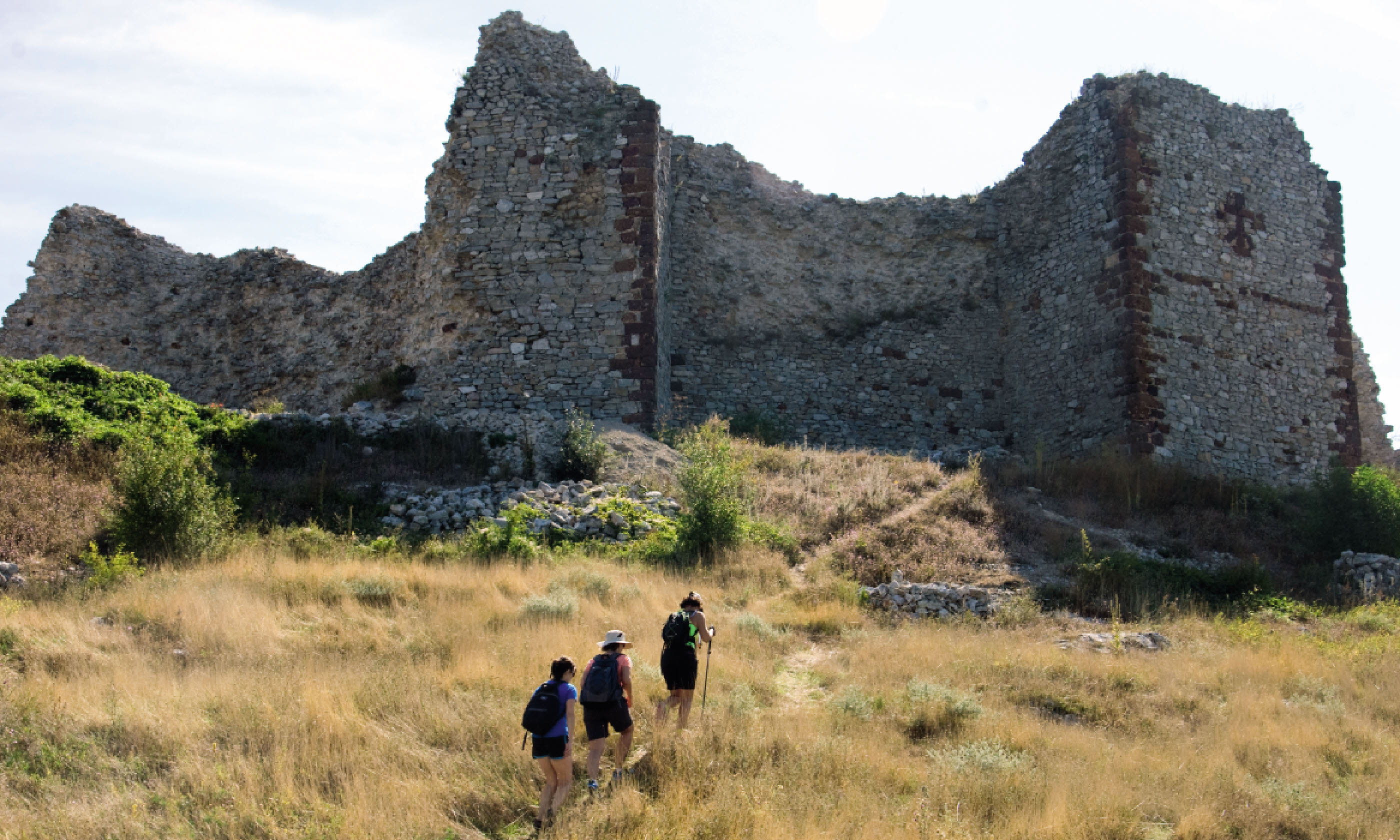 Trekking to the 13th-century castle in Novoberd, Kosovo (Lyn Hughes)
Trekking to the 13th-century castle in Novoberd, Kosovo (Lyn Hughes)
In Pristina, my initial impressions were of youth – the population is the youngest in Europe, and wedding shops abound. Glamorous young women walked around in short dresses, and the many pavement cafés appeared full. But high unemployment means that many of those drinkers will nurse one cup for hours. And that drink may well be coffee. “We have the best macchiato in the world!” stated my guide – the first of many locals to tell me so. To my surprise, they were probably right.
We only had a few hours but there was time for a quick squint at Bill Clinton Boulevard and the Hillary Clinton dress shop, a stroll down Nena Tereza (Mother Theresa) Boulevard and a visit to the lovely Emin Gjiku Ethnographic Museum. Then we headed out into the countryside.
Pristina was interesting, but it is the rest of Kosovo that intrigues. We slept one night in a
kulla – a centuries-old fortified building; several are being restored in an imaginative scheme. We visited the impressive Decani Monastery, and walked and cycled the hills and valleys, always having them to ourselves. In Gjakova we explored the old bazaar. In the old Ottoman town of Prizren, we longed for more time to explore its mosques and churches, or simply admire its lovely stone bridge.
Where were all the people?
Leaving Kosovo, we drove into the northern part of Albania, through brooding mountains, and continued south. Here, I had an opportunity to revisit what is now known as the ‘Albanian Riviera’. I had been here in the 1990s; today, there is more development along the coast, but fortunately it hasn’t been as badly affected as I’d feared.
When we came to the seaside village of New Qeparo, I persuaded the driver to make a detour up to beautiful Old Qeparo, set 450m up Mount Gjivlash. I had stayed here when locals were trying out a village homestay scheme but those plans, like the village, appeared to have crumbled.
Today, there are few permanent residents. In summer the village is an excursion for coastal visitors, and a couple of cafés were open. At one, the owners told me they are planning to open some simple accommodation.
Anywhere else in the Mediterranean, there would be a boutique hotel or two, and a swish restaurant making use of the local produce. The houses would be snapped up as holiday homes or by expats. Yet here, all was quiet. Below the village were tiny terraced olive orchards; from the hilltop, inviting paths radiated out over maquis-covered folds. Walkers will want to stay here, I assured the café entrepreneur.
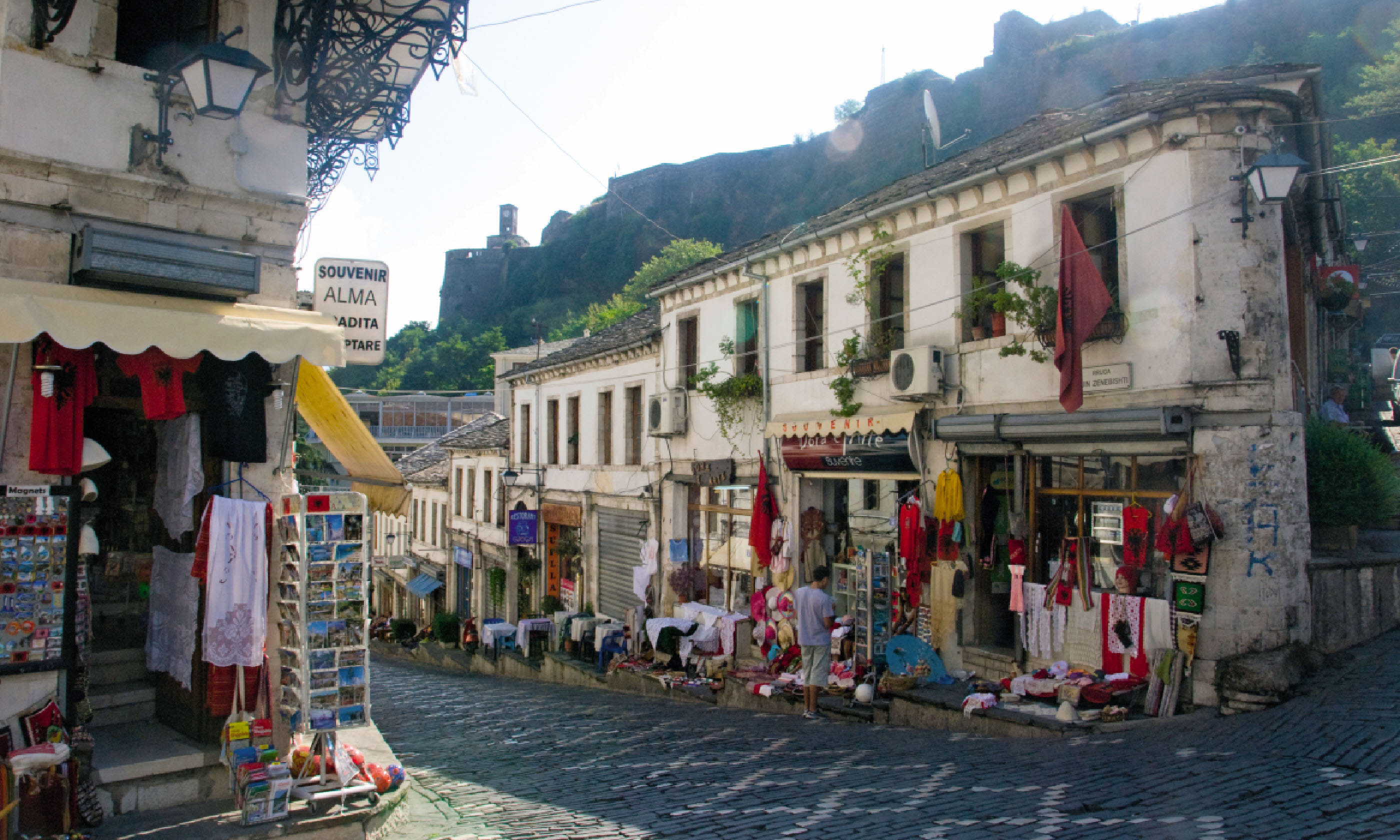 Gjirokaster old town (Lyn Hughes)
Gjirokaster old town (Lyn Hughes)
We carried on south, to the archaeological site of Butrint. The site has been occupied since at least the ninth century BC, but could well be much older. There are layers upon layers of history here, and the Romans, Venetians and Ottomans all left their marks. The Roman theatre, dating back to the fourth century AD, is still used for events each summer. It is all set in a beautiful landscape of woodland, grass, lagoon and river.
I took a sunset horseride along Butrint lagoon with Auron Tare. When I was here in the 90s, Auron was fighting to have the site protected. It is now a UNESCO World Heritage site, and receives day-visitors from Corfu. Today Auron is a member of parliament and director of the Albanian National Coastline; he also runs a small tourism business.
He started running horse trails by accident, he told me: “A friend needed to find a home for his horses, so we took them. And then we had to find something to do with them.” So, Auron and his wife, Nancy, offer rides by the hour on the plains over the other side of the river from Butrint. They also offer multi-day trails in the footsteps of Lord Byron, who travelled on horseback and foot through the region, on the journey that inspired
Childe Harold’s Pilgrimage.
The sun was already down when we switched the horse for a 4WD and headed high into the hills to visit a Sufi monastery. “This is where Byron walked,” said Auron as we bumped along a rough track.
The sky was heavy with stars as we glimpsed the silhouettes of an avenue of stately cypress trees, announcing our arrival at Bektashi Melan. There, a Sufi dervish with the most brilliant-blue eyes invited us in. I hadn’t known what to expect, but it certainly wasn’t drinking raki in a startlingly green room with a chain-smoking holy man.
A vow to return
A couple of days later, a drive through spectacular mountainous scenery in south-east Albania had me yearning to don walking boots to really explore the empty wilderness. In several hours we passed just two other vehicles. Eventually we came to the resort town of Pogradec, on the shores of Lake Ohrid; from there it was a few kilometres to the border with Macedonia, or the FYROM (Former Yugoslav Republic of Macedonia) as the United Nations insists it is known.
Just over the border was Sveti Naum Monastery, home to strutting peacocks and a gem of a church, founded in AD 905 by the eponymous St Naum. The complex is now a hotel, and I checked into my room, which had a view of the lake – one of Europe’s deepest and oldest. I felt a strong sense of calm. In Albania I had wanted more time to walk; at Lake Ohrid, I yearned for time to relax.
Inside the chapel a coffin holds the relics of St Naum. Like the other visitors, I knelt to put my ear to the coffin to hear his heartbeat. Sure enough there was a pulsing sound, presumably water dripping somewhere. Outside the monastery walls, a statue of St Naum has been carved from an old walnut tree; offerings had been left – there is a superstition that the saint can help couples have children.
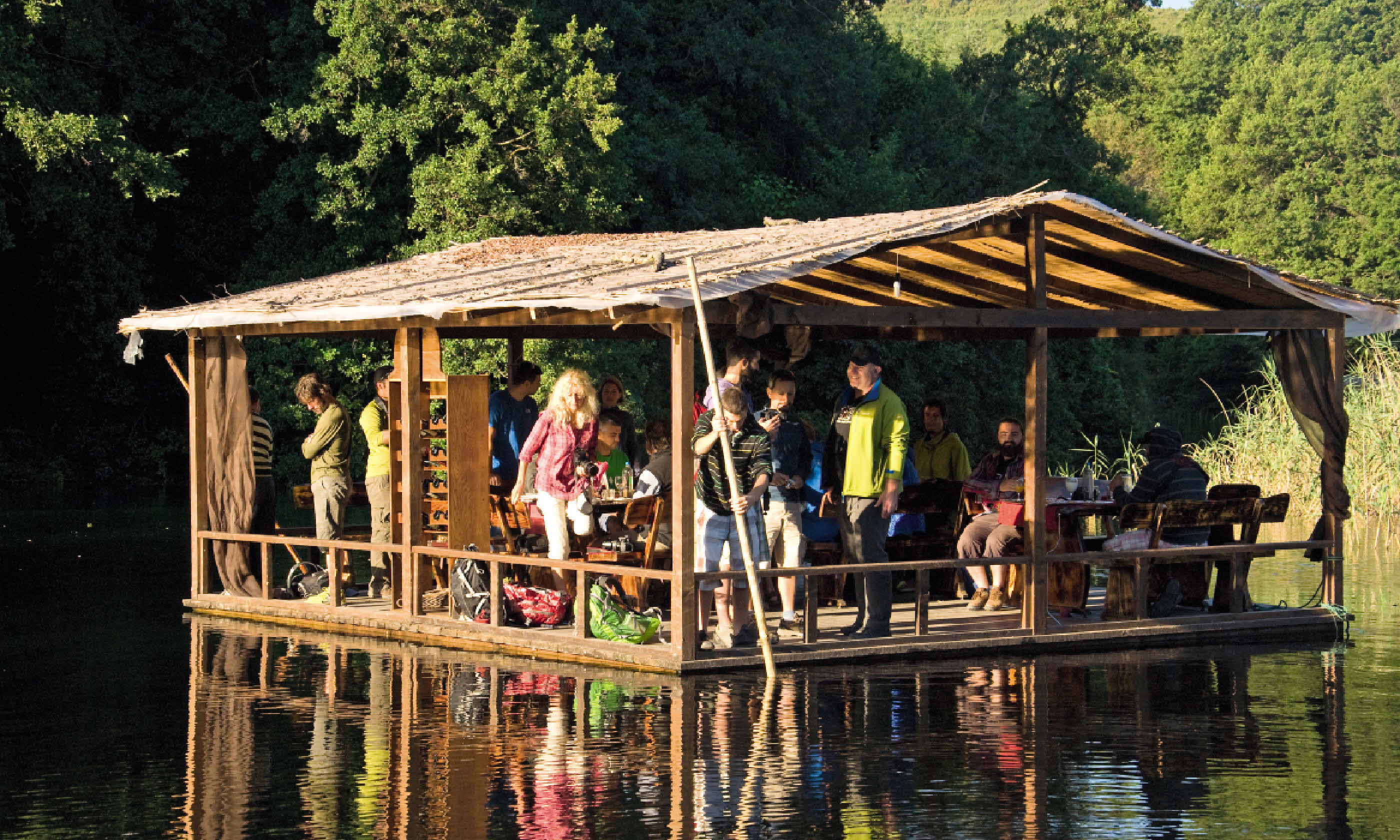
Restaurant Ostrovo (Lyn Hughes)
We had breakfast the next morning at Restaurant Ostrovo, near the springs that feed the lake. To our surprise, once the food had been laid out, the pontoon on which we were seated became a raft and pulled away. We ate while being poled gently around the clear springs.
Another boat took us from the hotel and across the lake to Ohrid town. Along the way we saw a mix of resorts and homes along the eastern shore, along with what used to be Yugoslavia’s communist dictator Tito’s summer residence, now used by the government for special visitors.
Then Ohrid itself came into view, along with its iconic churches – it once had 365 of them, one for every day of the year. Disembarking, we sauntered through the charming streets, up to the Roman Theatre and then the fortress at the top of Ohrid Hill.
We walked back down to the 13th century Saint John at Kaneo church, perhaps the most recognisable image of Macedonia, and the subject of nearly every postcard. Along the lakeside, cafés vied for our attention while bronzed bodies lay on the shallow stony beaches or splashed in the crystal waters. I texted a friend: ‘We must come back here’.
Cheers!
It was raining when we rose before dawn in the mountains of Mavrovo National Park, a few mornings later. We drove to a forest clearing where a bunch of horses were tied around a corral. Horseman Vasko lined us up, explained the basics of riding a horse and then made each of us ride a figure of eight on a quiet pony. Assessment done, it became a blind date exercise as he matched each of us (perfectly) with a four-legged friend and helped us into comfy western saddles.
As we rode, Vasko pointed to where a wolf had been seen a few days earlier and told us that they regularly encounter wolves and bears up here in the mountains. It would have been a magnificent ride, but suddenly a tap was turned in the sky, and the steady rain became a deluge. We admitted defeat and turned for home, squelching in the saddles. I added another place to my ‘must come back’ list.
Not that Macedonia is all about lakes and mountains. It’s a small country but there’s a lot packed in. I stayed a few nights in the capital, Skopje – worth a visit in its own right, not least for the slightly surreal giant statues that contrast with the old bazaar. Using the city as a base I visited the archaeological site of Stobi and the wine region.
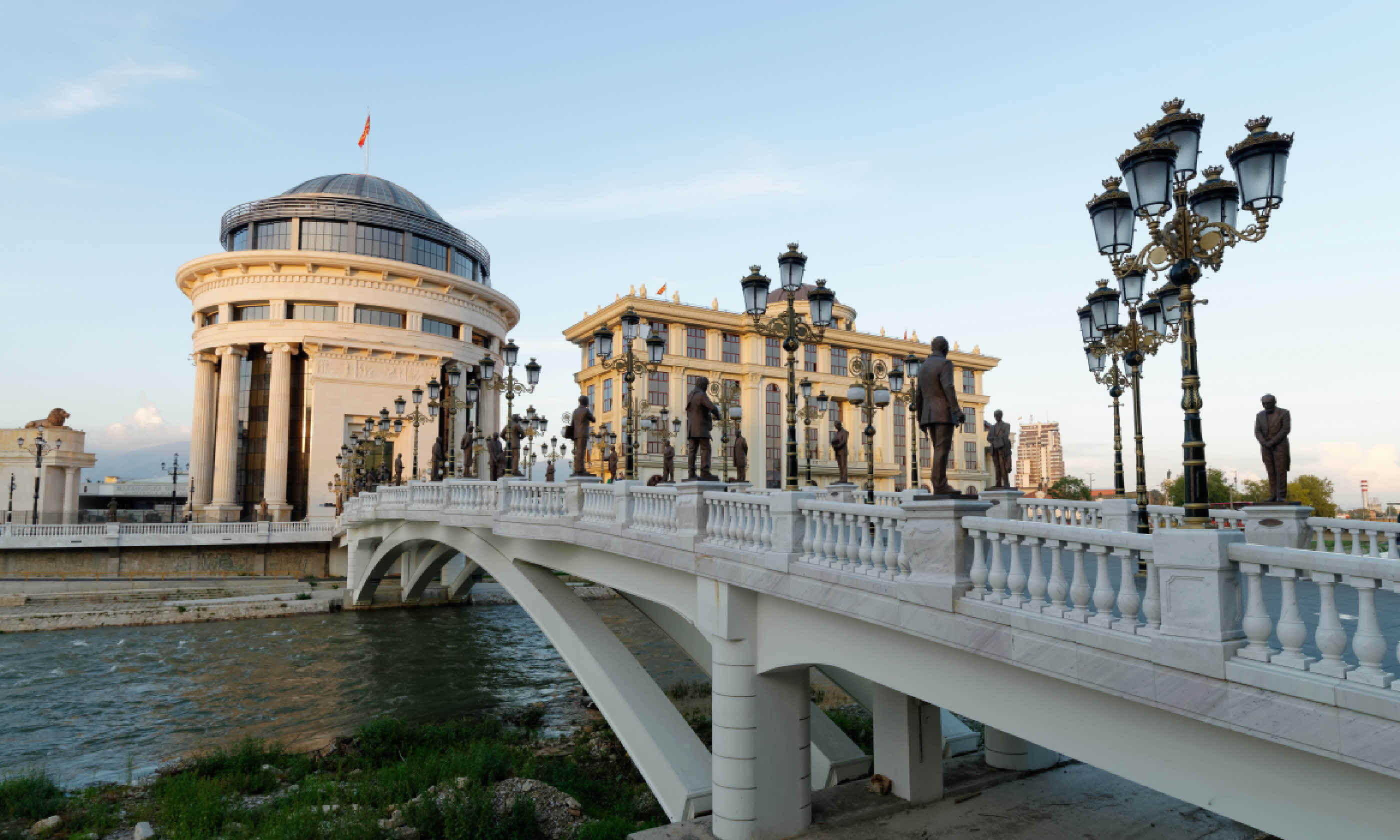 Downtown Skopje
Downtown Skopje
At Popova Kula, a beautiful winery that welcomes visitors, I had a superb meze lunch of local produce while sitting on a sun-splashed balcony looking out over the vines to the Demir Kapija Gorge beyond. I tried some of the wines, including a lovely rosé made from a local grape,
stanushina. The winery is working to preserve domestic grape varieties, as well as producing more familiar chardonnays and merlots.
A trio of countries offering excellent wines and coffee, amazing value for money, Byzantine churches and Ottoman fortresses, Roman cities and ancient sites, wildlife, magnificent mountains and lakes that are crying out to be explored... what’s not to like? I think Father Kalist can expect a few more visitors to be coming his way.
Make it happen
The author travelled using a range of local operators including:
Our Own Expeditions, Auron & Nancy Tare’s company offering riding, archaeology and more in Albania;
Outdoor Albania, which runs trekking, heritage and outdoor activities;
Macedonia Experience, which arranges cultural, active and specialist day-trips and longer breaks.
Getting there
There are direct flights from the UK to Tirana and Skopje; flight time is just over three hours. There are no direct UK-Pristina flights.
Wizz Air flies Luton-Ohrid in summer. The author flew into Pristina and out of Skopje, via Vienna, with
Austrian Airlines.
Getting around
Buses ply the main routes. Taxis are plentiful and good value; make sure you write your destination down to show the driver as English won’t necessarily be understood everywhere.
Accommodation
Hotel Qarshia e Jupave in Gjakova, Kosovo, is one of the country’s best.
Hotel Kalemi is a characterful guesthouse with good views in Gjirokaster, Albania.
St Naum is an atmospheric hotel set within a monastery complex by Lake Ohrid, Macedonia.
Hotel Tutto, in the Macedonian village of Jance, in Mavrovo NP, is known for its local cuisine.
Popova Kula, a well regarded winery, is also a hotel; it offers cycle hire, birding and other activities.
Food & drink
Expect hearty stews, cheeses, spreads and seasonal vegetables. In Kosovo and parts of Albania, you may get to try
flia, a traditional dish of batter layered with buttermilk, then baked. In Albania you will find good seafood along the coast. Macedonian dishes include
meze (salads and spreads), freshwater fish and
tavce gravce (baked beans).
The local firewater throughout the region is
raki. All three countries produce wine, and the standard is improving after the communist years. Coffee is good almost everywhere, even in roadside service stations, with macchiato, espresso and cappuccino increasingly the norm. However, strong Turkish coffee is available too.
See the full results of the 2016 Wanderlust Reader Travel Awards
Main image: St John at Kaneo Church overlooking Lake Ohrid, Macedonia (Lyn Hughes)





